 My first movie on July 30 was the first feature by two French directors of independent short films, Caroline Poggi and Jonathan Vinel. Jessica Forever, which the duo wrote as well as directed, is set in a near future in which disaffected and violent youth, mostly male, roam empty suburbs. The law hunts them down with killer drones, and the movie opens with a cloud of drones after one man, Kevin (Eddy Suiveng), who has squatted in an empty house. He’s saved from the law by a mysterious woman named Jessica (Aomi Muyock) and her squad of young men, who welcome Kevin into the fold.
My first movie on July 30 was the first feature by two French directors of independent short films, Caroline Poggi and Jonathan Vinel. Jessica Forever, which the duo wrote as well as directed, is set in a near future in which disaffected and violent youth, mostly male, roam empty suburbs. The law hunts them down with killer drones, and the movie opens with a cloud of drones after one man, Kevin (Eddy Suiveng), who has squatted in an empty house. He’s saved from the law by a mysterious woman named Jessica (Aomi Muyock) and her squad of young men, who welcome Kevin into the fold.
Various bonding scenes follow, but the emotions of the group are odd: muted, to the extent they exist at all. The young men, each in their late teens or twenties, sleep in one room. All worship Jessica. Kevin makes a smooth transition to becoming one of them, training with them in the use of weapons and force. Then another flock of drones approaches, and there’s a surprising death, and the survivors have to flee. They end up on an island, where history risks repeating itself: some members of the group get too close to the locals. Will they find new allies? Or pull the attention of the authorities down on their heads?
The first thing to say about the movie is that it looks lovely. Images are nicely composed, the camera mostly still (it struck me at one point that it seemed to move more when Jessica was in frame, but I wouldn’t swear to that). There’s a kind of sterile perfection in the images of rich estates and partly-green suburbs, emphasised by the lack of people — we see cars and trucks in the distance, see a mall with passersby in it, meet a community on the island where Jessica’s group ends up, but mostly the world is empty of outsiders, of passersby or neighbours. There is a solitude here; a silence and a stillness.
Along with that there’s an affectlessness to both the characters and actors. There’s a blankness to them that’s maybe less an absence of emotion than an absence of a certain kind of social convention. You don’t know how to read them. This all fits perfectly well with the film’s set-up: these are young men gone wild, grown up outside of family or community, learning how to interact with each other. Their only guide, their teacher and parent, is Jessica. Who she is, and why she is gathering these men, is not explained; this is not the sort of film that explains these things. The important thing is that her relationship to her followers comes through, and for the most part it does.
I would go so far as to say that one of the most intriguing aspects of the film is the way it depicts its characters. These youths are convincingly violent, and many of them have done terrible things. But they don’t act the way this sort of character acts in virtually every other movie set in the contemporary world. These aren’t tough-guy hard men trying to assert dominance by busting each others’ balls. They’re quiet, if not reflective, and give each other space and respect. There’s a kind of alternative masculinity to these men, strong and capable of violence but not brutal.
…
Read More Read More

 Dr. Phibes is far more than the evocation of the great thriller characters of its creator’s childhood; he is a character that stands proudly alongside Dracula, Moriarty, Nikola, Fu Manchu, Fantomas, and Mabuse as an equal in inventiveness and execution. William Goldstein, as screenwriter and novelist, created an immortal as only the best storytellers do. Phibes is a character who transcends his era, defines his own archetype, and is firmly established in his own mythology to pass from one generation, century, and millenium to the next. The best news for fans is The Master’s work continues with the fifth and latest book in the ongoing series, The Androbots – Book I of The Dr. Phibes Manifest.
Dr. Phibes is far more than the evocation of the great thriller characters of its creator’s childhood; he is a character that stands proudly alongside Dracula, Moriarty, Nikola, Fu Manchu, Fantomas, and Mabuse as an equal in inventiveness and execution. William Goldstein, as screenwriter and novelist, created an immortal as only the best storytellers do. Phibes is a character who transcends his era, defines his own archetype, and is firmly established in his own mythology to pass from one generation, century, and millenium to the next. The best news for fans is The Master’s work continues with the fifth and latest book in the ongoing series, The Androbots – Book I of The Dr. Phibes Manifest.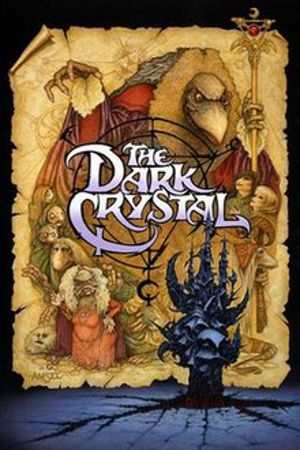
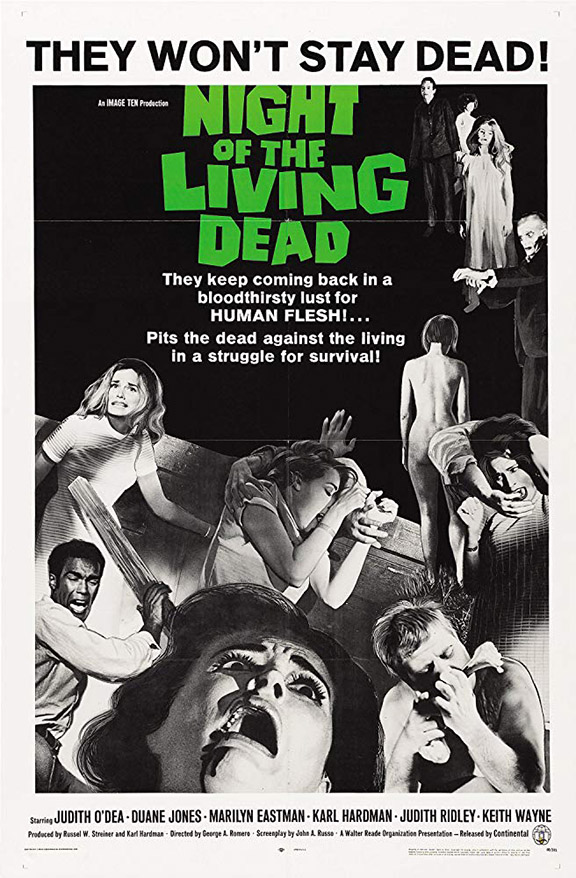
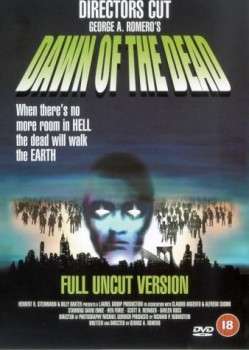
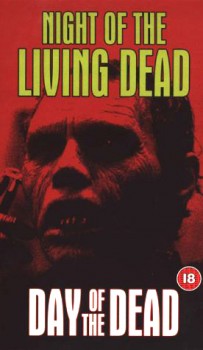

 Yesterday I posted my last full review of a film from the 2019 Fantasia International Film Festival. Today, then, a post looking back at this year’s Fantasia. First, as always, my profound thanks to everyone who puts the festival together. And thanks as well to the audiences, who give the festival a reason for being. Special thanks to everyone I watched movies with, everyone I waited in line with, and everyone who I talked with and hung out with during Fantasia 2019.
Yesterday I posted my last full review of a film from the 2019 Fantasia International Film Festival. Today, then, a post looking back at this year’s Fantasia. First, as always, my profound thanks to everyone who puts the festival together. And thanks as well to the audiences, who give the festival a reason for being. Special thanks to everyone I watched movies with, everyone I waited in line with, and everyone who I talked with and hung out with during Fantasia 2019. All good things must come to an end, they say, and for me Fantasia 2019 ended at the Hall Theatre with the Korean action-horror movie The Divine Fury (사자, romanised as Saja, literally Emissary). Directed by Kim Joo-hwan, it follows Yong-hu (Park Seo-jun), a champion MMA fighter who lost his father under mysterious circumstances at a young age. In the present, when mysterious wounds appear on his hands and he is attacked by a demonic force, a blind shaman guides him to exorcist Father Ahn (Ahn Sung-ki), who tells him the wounds are stigmata and give him great power in fighting demons. The two team up, reluctantly on the part of Yong-hu, who holds a grudge against Christianity after the death of his father. But there are dark forces at work in Seoul, and Yong-hu must use all his skills to defeat the forces of hell on earth.
All good things must come to an end, they say, and for me Fantasia 2019 ended at the Hall Theatre with the Korean action-horror movie The Divine Fury (사자, romanised as Saja, literally Emissary). Directed by Kim Joo-hwan, it follows Yong-hu (Park Seo-jun), a champion MMA fighter who lost his father under mysterious circumstances at a young age. In the present, when mysterious wounds appear on his hands and he is attacked by a demonic force, a blind shaman guides him to exorcist Father Ahn (Ahn Sung-ki), who tells him the wounds are stigmata and give him great power in fighting demons. The two team up, reluctantly on the part of Yong-hu, who holds a grudge against Christianity after the death of his father. But there are dark forces at work in Seoul, and Yong-hu must use all his skills to defeat the forces of hell on earth. The nice thing about my last day of Fantasia was that rather than sit in one place, I would watch something on my own in the screening room, then something at the small De Sève Cinema, and finally something at the big Hall Theatre. It had the well-rounded feeling of a good summing-up.
The nice thing about my last day of Fantasia was that rather than sit in one place, I would watch something on my own in the screening room, then something at the small De Sève Cinema, and finally something at the big Hall Theatre. It had the well-rounded feeling of a good summing-up.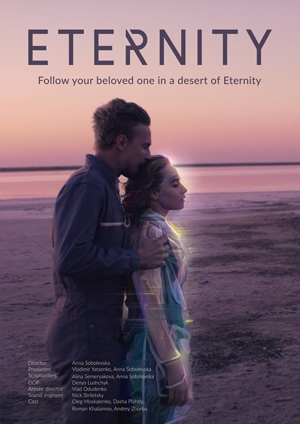 After taking a day to attend to various non-cinema matters, I came early to the last day of the Fantasia Film Festival. I had two movies I wanted to see in theatres, but first I wanted to catch up on something I’d missed when played on the big screen: the 2019 International Science Fiction Short Film Showcase. Luckily, I was able to watch it at the Fantasia screening room. Uncharacteristically, American shorts dominated this year; in an appropriately science-fictional statistic, 7 of 9 movies were from the US, with one from Australia that ended the showcase (at least in the order described in the Fantasia program) and one from Ukraine that began it.
After taking a day to attend to various non-cinema matters, I came early to the last day of the Fantasia Film Festival. I had two movies I wanted to see in theatres, but first I wanted to catch up on something I’d missed when played on the big screen: the 2019 International Science Fiction Short Film Showcase. Luckily, I was able to watch it at the Fantasia screening room. Uncharacteristically, American shorts dominated this year; in an appropriately science-fictional statistic, 7 of 9 movies were from the US, with one from Australia that ended the showcase (at least in the order described in the Fantasia program) and one from Ukraine that began it.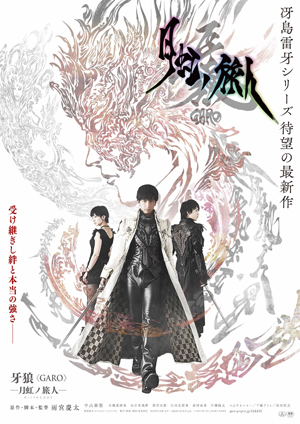 I approached my second and last film of July 30 with real uncertainty. I’d never seen many tokusatsu films or TV shows, and what I had seen I hadn’t cared for. (‘Tokusatsu’ literally means something like ‘special effects,’ but in the West it’s come especially to refer to shows like Power Rangers or Kamen Rider.) Still, playing in the De Sève Cinema was Garo — Under the Moonbow (Garo: gekkô no tabibito, 牙狼 — 月虹ノ旅人, also translated Garo: Moonbow Traveler), written and directed by Keita Amemiya. It’s the latest installment of a franchise, created by Amemiya, which began with a 2005 TV series and has continued through more TV shows, live-action movies, and anime series. as well as video games, manga, and various other tie-ins. A veteran creator of tokusatsu dramas, Amemiya is particularly known for his powerful design sense, and the images and description of the film promised a stylish fantasy adventure. Although it’d be my first experience with a series that had dozens of hours of continuity behind it, I decided it was worth passing up a chance to see The Crow on the big screen in order to watch Under the Moonbow.
I approached my second and last film of July 30 with real uncertainty. I’d never seen many tokusatsu films or TV shows, and what I had seen I hadn’t cared for. (‘Tokusatsu’ literally means something like ‘special effects,’ but in the West it’s come especially to refer to shows like Power Rangers or Kamen Rider.) Still, playing in the De Sève Cinema was Garo — Under the Moonbow (Garo: gekkô no tabibito, 牙狼 — 月虹ノ旅人, also translated Garo: Moonbow Traveler), written and directed by Keita Amemiya. It’s the latest installment of a franchise, created by Amemiya, which began with a 2005 TV series and has continued through more TV shows, live-action movies, and anime series. as well as video games, manga, and various other tie-ins. A veteran creator of tokusatsu dramas, Amemiya is particularly known for his powerful design sense, and the images and description of the film promised a stylish fantasy adventure. Although it’d be my first experience with a series that had dozens of hours of continuity behind it, I decided it was worth passing up a chance to see The Crow on the big screen in order to watch Under the Moonbow. My first movie on July 30 was the first feature by two French directors of independent short films, Caroline Poggi and Jonathan Vinel. Jessica Forever, which the duo wrote as well as directed, is set in a near future in which disaffected and violent youth, mostly male, roam empty suburbs. The law hunts them down with killer drones, and the movie opens with a cloud of drones after one man, Kevin (Eddy Suiveng), who has squatted in an empty house. He’s saved from the law by a mysterious woman named Jessica (Aomi Muyock) and her squad of young men, who welcome Kevin into the fold.
My first movie on July 30 was the first feature by two French directors of independent short films, Caroline Poggi and Jonathan Vinel. Jessica Forever, which the duo wrote as well as directed, is set in a near future in which disaffected and violent youth, mostly male, roam empty suburbs. The law hunts them down with killer drones, and the movie opens with a cloud of drones after one man, Kevin (Eddy Suiveng), who has squatted in an empty house. He’s saved from the law by a mysterious woman named Jessica (Aomi Muyock) and her squad of young men, who welcome Kevin into the fold.